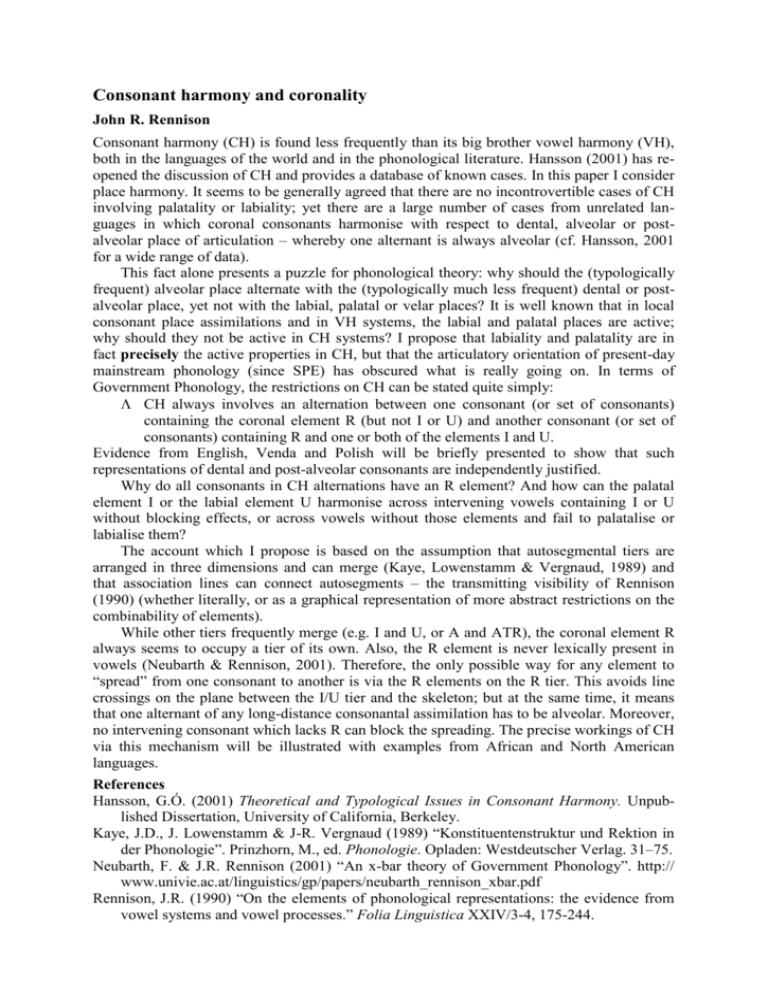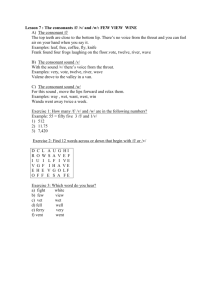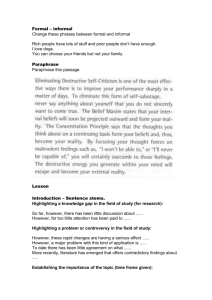Consonant harmony and coronality
advertisement

Consonant harmony and coronality John R. Rennison Consonant harmony (CH) is found less frequently than its big brother vowel harmony (VH), both in the languages of the world and in the phonological literature. Hansson (2001) has reopened the discussion of CH and provides a database of known cases. In this paper I consider place harmony. It seems to be generally agreed that there are no incontrovertible cases of CH involving palatality or labiality; yet there are a large number of cases from unrelated languages in which coronal consonants harmonise with respect to dental, alveolar or postalveolar place of articulation – whereby one alternant is always alveolar (cf. Hansson, 2001 for a wide range of data). This fact alone presents a puzzle for phonological theory: why should the (typologically frequent) alveolar place alternate with the (typologically much less frequent) dental or postalveolar place, yet not with the labial, palatal or velar places? It is well known that in local consonant place assimilations and in VH systems, the labial and palatal places are active; why should they not be active in CH systems? I propose that labiality and palatality are in fact precisely the active properties in CH, but that the articulatory orientation of present-day mainstream phonology (since SPE) has obscured what is really going on. In terms of Government Phonology, the restrictions on CH can be stated quite simply: CH always involves an alternation between one consonant (or set of consonants) containing the coronal element R (but not I or U) and another consonant (or set of consonants) containing R and one or both of the elements I and U. Evidence from English, Venda and Polish will be briefly presented to show that such representations of dental and post-alveolar consonants are independently justified. Why do all consonants in CH alternations have an R element? And how can the palatal element I or the labial element U harmonise across intervening vowels containing I or U without blocking effects, or across vowels without those elements and fail to palatalise or labialise them? The account which I propose is based on the assumption that autosegmental tiers are arranged in three dimensions and can merge (Kaye, Lowenstamm & Vergnaud, 1989) and that association lines can connect autosegments – the transmitting visibility of Rennison (1990) (whether literally, or as a graphical representation of more abstract restrictions on the combinability of elements). While other tiers frequently merge (e.g. I and U, or A and ATR), the coronal element R always seems to occupy a tier of its own. Also, the R element is never lexically present in vowels (Neubarth & Rennison, 2001). Therefore, the only possible way for any element to “spread” from one consonant to another is via the R elements on the R tier. This avoids line crossings on the plane between the I/U tier and the skeleton; but at the same time, it means that one alternant of any long-distance consonantal assimilation has to be alveolar. Moreover, no intervening consonant which lacks R can block the spreading. The precise workings of CH via this mechanism will be illustrated with examples from African and North American languages. References Hansson, G.Ó. (2001) Theoretical and Typological Issues in Consonant Harmony. Unpublished Dissertation, University of California, Berkeley. Kaye, J.D., J. Lowenstamm & J-R. Vergnaud (1989) “Konstituentenstruktur und Rektion in der Phonologie”. Prinzhorn, M., ed. Phonologie. Opladen: Westdeutscher Verlag. 31–75. Neubarth, F. & J.R. Rennison (2001) “An x-bar theory of Government Phonology”. http:// www.univie.ac.at/linguistics/gp/papers/neubarth_rennison_xbar.pdf Rennison, J.R. (1990) “On the elements of phonological representations: the evidence from vowel systems and vowel processes.” Folia Linguistica XXIV/3-4, 175-244.









